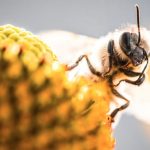 Bees are widely regarded as one of the most important species on the planet. Pollination by bees is estimated to account for around 1/3 of all food we consume. It is understandable therefore that there is widespread concern about the health of the bee population around the world, with some experts going as far as to suggest that the species may become extinct in Britain by 2018.
Bees are widely regarded as one of the most important species on the planet. Pollination by bees is estimated to account for around 1/3 of all food we consume. It is understandable therefore that there is widespread concern about the health of the bee population around the world, with some experts going as far as to suggest that the species may become extinct in Britain by 2018.
A wide range of projects have attempted to understand how bee populations function. A few years ago, a team of academics built a web application that allowed bee keepers to connect up, both with fellow keepers and with researchers. The keepers registered their hive, recorded it on a scale and tracked daily cycles such as its weight, humidity and temperature. The data was used by scientists hoping to reveal patterns in the health of the bee population.
Another fascinating project has recently emerged out of Bangor University in Wales, where researchers have developed tiny ‘backpacks’ that are designed to be worn by bees to aid with tracking their movements. The idea is that it will allow researchers to learn more about where bees collect nectar, and indeed the various issues that affect bee populations.
The lightweight and long-range device is powered by the electrical energy produced by the bee itself, with a small drone then following its movements.
It marks a distinct improvement on current methods of monitoring bees, which have limited capabilities due both to the weight of the devices and the power required to function.
The team believe their device will allow bees to be tracked across their entire foraging range and provide invaluable insight into how they behave, both individually and in relation to neonicotinoids and other insecticides.
“The ability to track bees or other insects over their entire foraging range will be useful in various circumstances. Neonicotinoids and other insecticides, for example, affect the bee’s ability to navigate. The ability to track them over long distances can help us work out how the nicotinoids are affecting their direction finding. Other applications include tracking Asian hornets (a serious threat to many bee species) in Europe with a view to controlling or eradicating them before it’s too late,” the researchers say.
The team hope to test out the devices in a poly tunnel this year before rolling it out in the field. It’s a fascinating project, and you can learn more via the video below.